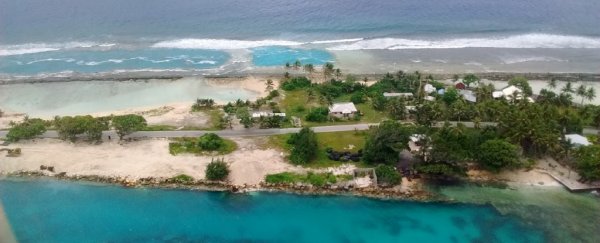In episode four of the HBO miniseries Chernobyl, Soviet officials assess the damage of a 1986 power-plant explosion, which released plumes of radioactive material into the air.
The roof of the power plant, they argue, has become "the most dangerous place on Earth" – a place where two minutes of exposure would cut a person's life expectancy in half.
In the years since, those dangers have gone down significantly. Though Chernobyl is still home to a 1,000-square-mile restricted zone, the site's abandoned schoolyards, amusement park, and classrooms are now open to visitors 18 or older.
"You will probably get more radiation from the flight that you take," said Claire Corkhill, a nuclear-waste-disposal researcher at the University of Sheffield who's been assisting with the Chernobyl cleanup.
That might not be the case in certain areas of the Marshall Islands, an area in the Pacific Ocean where the US conducted 67 nuclear tests after World War II.
A recent study from researchers at Columbia University found that parts the islands contained far more radiation than the land contaminated by the Chernobyl disaster.
The researchers detected "elevated levels" of radioactive elements like americium, cesium, and two types of plutonium in 38 soil samples taken from 11 different islands.
The highest radiation dose was found on Bikini Island, where the US conducted its largest hydrogen bomb test and later sunk dozens of radioactive ships.
These radioactive elements were also involved in the Chernobyl accident, which released about 5,300 petabecquerels of radioactive material.
Within three months of the Chernobyl disaster, more than 30 people died of acute radiation sickness. Today, scientists estimate that tens, perhaps even hundreds, of thousands of people were severely affected by the catastrophe.
After testing for americium-241, the researchers found that certain islands contained much higher levels of the isotope than were found at Chernobyl in 2009.
Their tests also showed that Bikini Island contained up to 1,000 times more plutonium than was discovered at either Chernobyl or Fukushima (the Japanese prefecture where an earthquake set off a nuclear disaster in 2011).
In a separate study, the researchers found that fruits on some of the islands contained more cesium-137 than is permitted by international safety standards. Some of the islands also contained more cesium-137 than was discovered in Chernobyl 10 years after the accident.
Ultimately, the researchers determined that four northern islands – Runit, Enjebi, Bikini, and Naen – carried more contamination than areas near the Chernobyl power plant.
Though the islands are mostly uninhabited, the researchers wrote, nearby residents should be "warned against spending time" in these sites.
This article was originally published by Business Insider.
More from Business Insider:
